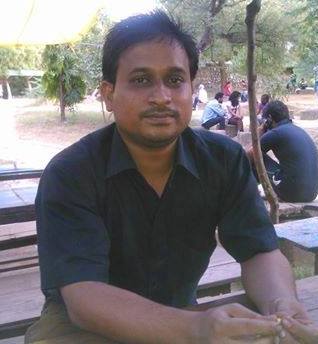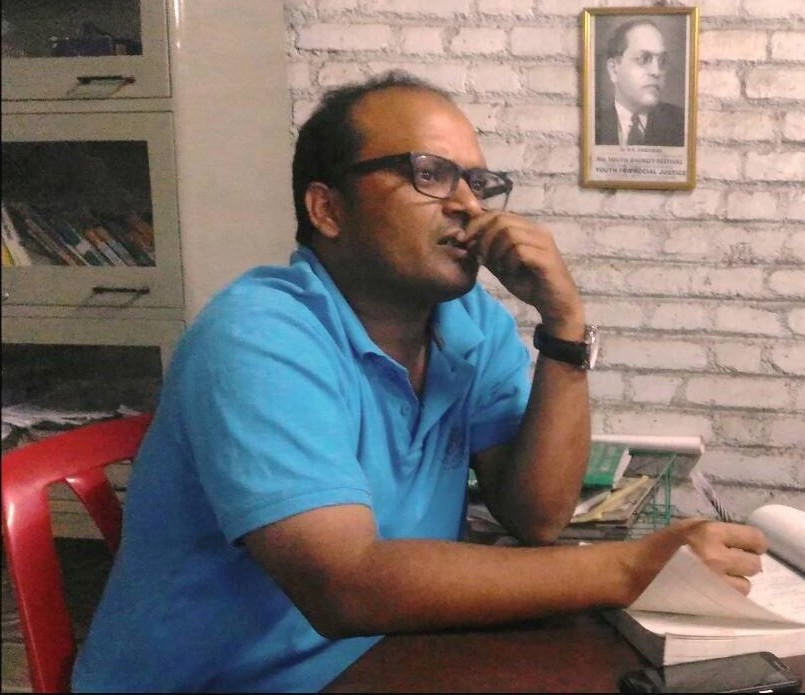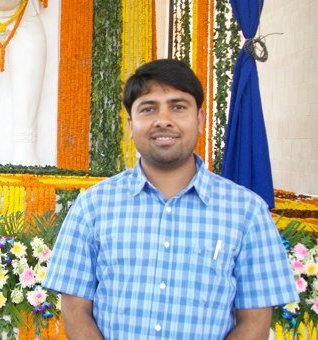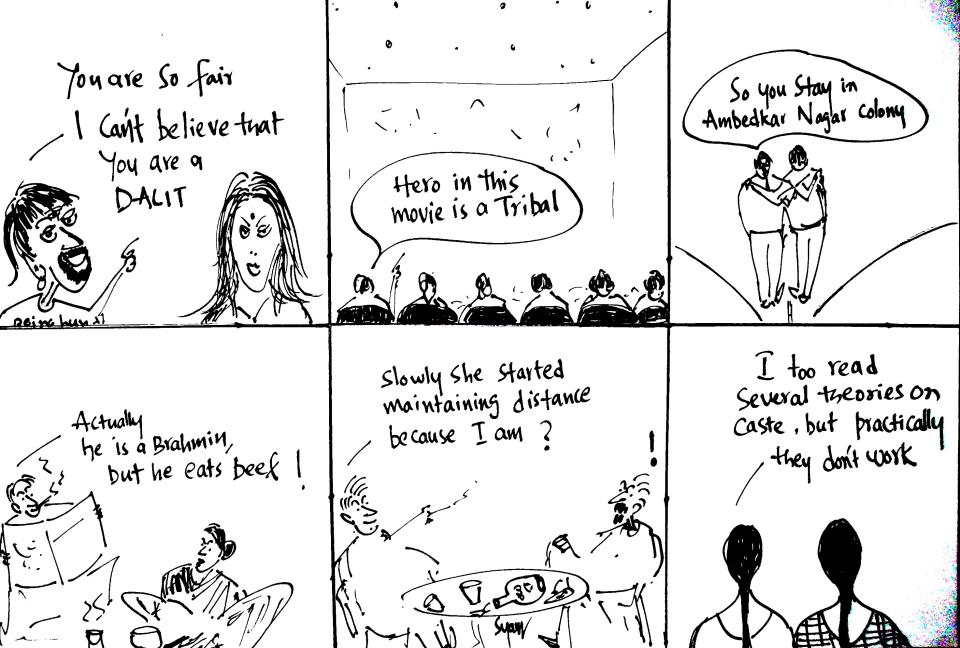Sanjeev Kumar
 Electoral politics is the ‘popular form’ of politics. Nonetheless, politics has a wider connotation, veiled and translated through various means such as paintings, monuments, songs, architecture, literature, language, protests, movements etc. In fact, these are spatial, temporal and linguistic sites that (de)construct the meaning and nature of politics over and over again. Similarly, the conceptual category of Dalit Politics contains a discourse to be systematically understood. The need of unpeeling the complexity of Dalit politics comes from various linear and sweeping conclusions about its nature and transformation throughout history. For example, since 1920s Ambedkar’s personality has been confined to his role as Dalit leader and chairman of the Constitution Drafting Committee, and therefore his other contributions and identities were never given adequate attention. Secondly, Dalit politics has been settled with the politics of reservation and identity politics. Thirdly, Dalits’ exploitation and discrimination have always been seen as a narrative of victimization. Finally, it has been a dominant trend in Indian scholarship to generalize about a larger political change by looking at any micro moment.
Electoral politics is the ‘popular form’ of politics. Nonetheless, politics has a wider connotation, veiled and translated through various means such as paintings, monuments, songs, architecture, literature, language, protests, movements etc. In fact, these are spatial, temporal and linguistic sites that (de)construct the meaning and nature of politics over and over again. Similarly, the conceptual category of Dalit Politics contains a discourse to be systematically understood. The need of unpeeling the complexity of Dalit politics comes from various linear and sweeping conclusions about its nature and transformation throughout history. For example, since 1920s Ambedkar’s personality has been confined to his role as Dalit leader and chairman of the Constitution Drafting Committee, and therefore his other contributions and identities were never given adequate attention. Secondly, Dalit politics has been settled with the politics of reservation and identity politics. Thirdly, Dalits’ exploitation and discrimination have always been seen as a narrative of victimization. Finally, it has been a dominant trend in Indian scholarship to generalize about a larger political change by looking at any micro moment.
For example, Ajay Gudavarthy opines (on 13 September 2014, in The Hindu) that Dalit politics in India has taken a rightward shift by citing the context of the political coalition of Udit Raj and Ram Vilas Paswan with BJP before the Lok Sabha Elections 2014. Such political coalition, for him, is a larger shift in Dalit Politics, termed as the ‘secularisation of caste’. Such a statement hints that other forms of politics such as Dalit movements and Dalit’s consciousness have lost their significance. On the other hand, such analytical ground may also be deployed to conclude that the act of Shiv Sena separating from BJP is the end of Hindutva politics and ‘Marathi nationalism’. Thus, two aspects of Dalit politics can be discussed; has Dalit politics taken a rightward shift? Then, what is its nature.
Dalit Politics v/s Electoral Politics
It is very significant to clarify that electoral politics is not the whole of Dalit politics but is one of the visible and popular forms of politics. Moreover, history has evidences that suggest that, electoral coalition is not a new phenomena, but it has different phenomenological dimensions. In 1930s, when Untouchable leaders were joining the Congress Party, Ambedkar highlighted the underlying reasons and consequences of such a coalition. He says that, the untouchable leaders, who are supposed to be the watch dog of the Untouchables, have turned into ‘muzzled dogs’ by joining the Congress. He says, “Far from biting they are not even able to bark, have subjected themselves to the discipline of the Congress” (Ambedkar: Dr. Babasaheb Ambedkar Writings and Speeches, Vo. 5. Chapter-25, “Gandhi and His Fast”, Pg- 345.). Consequently, untouchable leaders have lost their freedom of speech and dance on the whip of the party manifesto. Ambedkar says, “they cannot vote as they like, they cannot speak what they think. They cannot ask a question, they cannot move a resolution and they cannot bring in a Bill. They are completely under the control of the Congress Party Executive” (Ambedkar: 2014: 344).
Ambedkar further indicated that, a coalition is not bad per se; in fact it benefits the majority party. He analyses it as nothing but a careerist move on the part of the untouchables who were joining the Congress. They wanted to climb to the legislature by being secured of victory, because they had the fear that they could not fight against the Congress and win seats in legislature. Ambedkar says, “I am sure even these careerists would not have joined the Congress if it was possible for them to have got themselves elected independently of the Congress. They joined the Congress only because they found that that course was impossible” (Ambedkar: 2014: 347). This has relevance in the present scenario of Udit Raj, Ramdas Athawale and Ram Vilas Paswan joining with BJP, which should be seen as nothing but a careerist move to secure their seats in the legislature. This does not indicate that Dalit politics has become rightist. Because, there have been alliances in pre and post independence India between various antagonistic ideologies in the context of electoral politics.
On the other hand, despite such careerist attempts of Dalit leaders, the largest representation of Dalit electoral strength falls under the rubric of BSP and other Dalit parties. The table below shows the vote percentage of four parties: BSP led by Mayawati, LJP led by Ram Vilas Paswan and IJP led by Udit Raj and RPI (A) led by Ramdas Athawale in the general elections 2014.
BSP, which did not join BJP in 2014 election, could attract the largest voters in its support. Thus numerically, BSP can be considered as a representative of Dalit politics in the context of electoral politics. Nonetheless, mere ups and downs in electoral politics and careerist moves of some Dalit leaders must not be taken as negative completely. Such moves can also be understood as electoral strategy, whose fate and larger conclusion is still to be decided in the long run.
Dalit Politics for Dalit Public Sphere
Above data shows why Dalits’ support has not been hinduised in the context of electoral politics. In fact, Dalit politics has contributed to creating Dalit Public Sphere at different levels. For example, Dalit mass gathering at Deekshabhumi, Nagpur, for conversion or celebrating Ambedkar’s conversion diwas, is an essential feature of Dalit politics which is more central to understand its nature and transformation. Sarah Beth studied the celebration of the Dalit mela on the eve of Ambedkar Jayanti, in a particular public sphere, the Sansad Marg. For Beth, this has an influence on the performance of Dalit identity in two ways. First, such an event claims a separate cultural identity linked to a self-contained counter-public sphere and second, it positions them as equal citizens of the nation deserving of a place in the mainstream public sphere.

Deekshabhumi in Nagpur
Rahul Sonpimple in his observations, in the article titled, “Countering Hindu Morality: A Tale of Conversion” discusses how the moment of conversion reflects a larger shift in the history of Dalits’ lives. It has had a wide impact: from their material life to the consciousness of the converts and Dalits at large. Moreover, Sonpimple says, while describing his Ajji’s (grandmother’s) enthusiasm for visiting the site of conversion, that, “Once again we will have our own space and time to celebrate, to enjoy and to claim our humanity” (Sonpimple, 2013, roundtableindia.co.in). Similarly, Pradnya Mangala, in her piece, “A visit to Bhima Koregoan”, highlights the formation of Dalit public sphere in a different spatio-temporal context. She observes that, “the songs were as raw as they can be with no polished music or voices but what truly made it phenomenal was that it spoke about the oppressed voices which have no space in the mainstream” (Mangala, 2013, roundtableindia.co.in). Interestingly, she unfolds the discourse of the linguistic-performance (songs) that is future history in action. Similarly, two other articles by Yogesh Maitreya and Nilesh Kumar published in Round Table India point to a significant narrative of creation and celebration of the Dalit public sphere at multiple angles through visual reflection and the history of resistance.

Crowds at Chaityabhumi, Mumbai
Finally, my own visit to Deekshabhumi in 2013, gave me a sense of how at different levels the Dalit public sphere is in rapid transformation through various media such as public performance, bookstalls, different cultural programmes, people of different ages and places coming to celebrate ‘the place, person and time’ with full vigour, freedom and complete confidence.
Celebration of Ambedkar’s conversion at Deekshabhoomi, Nagpur
I find this as an exceptional and very powerful discourse of the Dalit public sphere wherein, in the history of Hindu culture, there has not been any such public space where a Dalit could exercise autonomy to stand ‘without a sense of shame or humiliation’. This, I find, is the essence of Dalit politics. In fact getting reservation in services and education has been nothing but to carve out spaces for Dalits in educational and occupational contexts. That in fact, satisfies only an immediate need of Dalits. But carving out Dalit public spaces is the essence of emancipation in Dalit politics which echoes the history of the caste struggle. Factually, Ambedkar wanted reservation for 15 years and had other plans for Dalit’s emancipation. On 9th October 2014, Prakash Ambedkar (Ambedkar’s grandson) called for an end to reservation in political positions. These instances need deeper reflection to understand the nature and future of Dalit politics.
On the other hand, Dalit-Bahujan social and political reformers, including Ambedkar, never limited Dalit politics to electoral politics or capturing political power. In fact he essentialised Dalit politics as the ‘simultaneous creation of public spheres’. That is evidenced in the simultaneity of his attempts to produce texts, protest against discrimination, demand rights and inclusion, carve out legal spaces and create psychological emancipatory spaces and potentialities in the minds of the untouchables.

Thus, two central features of Dalit politics come from Ambedkar. One, creation of public spaces at different levels for which the tools applied were electoral politics, reservation, protest movements, creation of texts and celebration of Dalit history from below. Second, he not only studied the untouchables and victims but also attacked and unfolded the strategies of the oppressor i.e. dominant castes, and the continuous heterogenous reproduction of the structure of caste. There is need to understand that the creation and spread of Dalit public sphere is the most essential feature of Dalit politics.
~
Please read other related articles:
Dalit Revolution and Hindutva Counter Revolution in Indian Politics: by Dr. N. Sukumar
If Dalits do not support Arundhati Roy, they are all pro-hindutva? by K. Satyanarayana
~~~
Sanjeev Kumar is a doctoral student at the Department of Political Science, University of Delhi.
Pictures courtesy: Nilesh Kumar and the internet.










